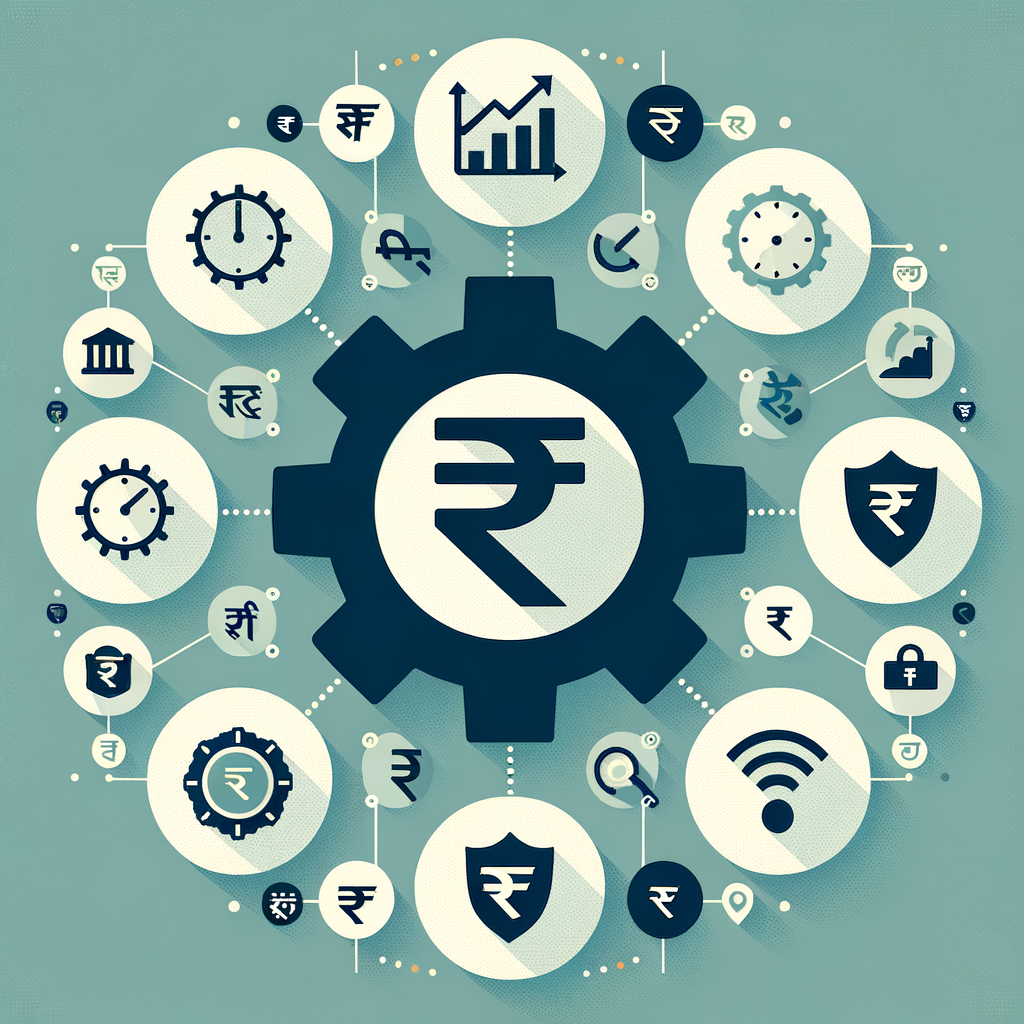The Benefits of Automating Your Debt Payments: A Guide for Indians
Have you ever experienced that sinking feeling in your stomach? It’s the sudden, cold realization that your credit card bill or loan EMI was due *yesterday*. The immediate stress about late fees, angry calls, and the potential hit to your CIBIL score can ruin your day. What if there was a simple, one-time setup that could eliminate this anxiety forever? There is, and it’s called automating debt payments. This powerful strategy is more than just a convenience; it’s a cornerstone of modern financial discipline. This guide will walk you through the significant debt payment automation benefits, explain the different methods available in India, and provide a step-by-step process for setting them up. We will cover why this is a crucial financial habit for both salaried individuals and small business owners looking to achieve financial peace of mind.
What Does Automating Debt Payments Mean in the Indian Context?
In simple terms, automating debt payments means giving your bank permission to automatically transfer money from your account on a specific date to pay a recurring bill. This could be anything from your home loan EMI to your monthly electricity bill. Instead of manually logging into multiple apps and websites each month, you set up a system that handles these payments for you like clockwork. This process of debt repayment automation for Indian citizens is facilitated by robust systems regulated by the Reserve Bank of India (RBI), making it both secure and efficient. The primary automatic payment options for debts in India fall into three main categories, each suited for different types of payments.
Standing Instructions (SI)
A Standing Instruction is the most traditional form of payment automation. It is a direct order you give to your own bank to transfer a fixed amount of money to another specific bank account on a regular, pre-set date. Because the amount is fixed, Standing Instructions are perfect for payments that do not change from month to month. Think of it as telling your bank, “Every 5th of the month, please send ₹25,000 from my savings account to this home loan account without fail.” This method is ideal for fixed loan EMIs (home, car, or personal loans) and even monthly rent payments.
NACH / e-Mandate
The National Automated Clearing House (NACH), managed by the National Payments Corporation of India (NPCI), is a more advanced and flexible system. An e-Mandate is the digital version of the physical mandate form that authorizes debits from your account. Unlike a Standing Instruction, an e-Mandate can be used for both fixed and variable amounts, up to a pre-approved limit. This makes it incredibly versatile.
- Best suited for: Mutual fund SIPs, insurance premiums, utility bills (which vary monthly), credit card bills, and all types of loan repayments.
- Actionable Tip: Today, most banks and lenders in India prefer the e-Mandate system for loan repayments because it is centralized, faster, and more efficient than traditional methods. For more technical details, you can visit the official NPCI page on NACH.
Auto-Debit on Credit/Debit Cards
This is a feature you likely use for many of your online subscriptions. Auto-debit on a card allows a merchant (like Netflix, Amazon Prime, or your mobile provider) to automatically charge your registered debit or credit card for recurring services. It’s convenient for smaller, regular payments where you have a direct relationship with the service provider.
- Important Note: The RBI has implemented guidelines for Additional Factor of Authentication (AFA) to enhance security. For recurring card payments, the merchant must send you a pre-transaction notification at least 24 hours before the payment. For any payment over ₹15,000, you will need to provide one-time approval for the transaction to go through.
The Key Advantages of Setting Up Automatic Debt Payments
Understanding the “why” behind this strategy is crucial for appreciating its impact on your financial health. This isn’t just about convenience; it’s about building a robust financial foundation. For anyone seeking smooth debt management through automation, these benefits are transformative, offering peace of mind and tangible monetary savings. The consistent, disciplined approach fostered by automation directly translates into a stronger financial profile and less day-to-day stress about managing your obligations.
1. Eliminate Late Fees and Penalties
This is the most immediate and tangible benefit. Late fees are essentially money thrown away for no good reason. A single missed credit card payment in India can attract a late fee ranging from ₹500 to ₹1,200, not to mention the high interest that starts accumulating on the outstanding balance. Missing a loan EMI also results in penalty charges. By setting up automatic payments, you ensure your bills are paid on or before the due date, every single time. This completely eliminates the risk of human error like forgetting a date, which directly saves you money that can be better used for savings or investments.
2. Significantly Improve Your CIBIL Score
Your payment history is the single most important factor that determines your CIBIL score, accounting for roughly 35% of its calculation. Every on-time payment acts as a positive signal to credit bureaus, while a single missed payment can drag your score down and remain on your report for years. Proactively learning how to track your credit history using your PAN card via CIBIL is a key part of this process. Automating debt payments India ensures you build a flawless payment record effortlessly. A high CIBIL score (typically above 750) is critical for your financial future. It unlocks access to better loan offers, lower interest rates, and quicker approvals for future credit needs like a home loan or a business loan. This is one of the most powerful benefits of automated debt payments for Indians.
3. Reduce Financial Stress and Mental Burden
The mental energy spent juggling multiple due dates is significant. You have to remember the EMI date for your car loan, the due date for two different credit cards, the insurance premium deadline, and more. This constant tracking creates a background hum of financial anxiety. Automation removes this entire mental load. Once set up, the system runs on its own, freeing up your mental space to focus on more important things, like growing your business or planning your investments. This reduction in stress and the peace of mind that comes with knowing your obligations are handled is an invaluable benefit.
4. Simplify Budgeting and Financial Discipline
When your essential debt payments are automatically deducted from your account at the beginning of the month (right after you receive your salary), it fundamentally changes how you budget. These payments become fixed, non-negotiable expenses. You are then left with your true disposable income for the rest of the month. This forces a level of financial discipline that is difficult to achieve with manual payments, where it can be tempting to delay a payment in favor of a discretionary purchase. Adopting effective budgeting techniques to reduce and eliminate debt can further strengthen this discipline. This clear financial picture makes it easier to allocate funds towards savings, investments, and daily expenses without overspending.
5. Save Valuable Time and Effort
Consider the time it takes each month to handle your bills manually: logging into your bank’s portal, finding the biller, entering the account details, entering the amount, and authenticating with an OTP. Now, multiply that by the number of bills you have. While it may only be a few minutes per bill, this adds up over a year. For busy professionals and small business owners, time is their most valuable asset. Automating your payments saves this cumulative time and effort, allowing you to invest it back into your work, family, or personal growth.
6. Achieve Debt-Free Goals Faster
Consistency is the ultimate weapon in the fight against debt. Every on-time payment, especially for loans with amortizing schedules, ensures that you are chipping away at the principal amount. Debt repayment automation for Indian citizens enforces this consistency without requiring constant willpower. By never missing a payment, you stay perfectly on track with your loan schedule. This disciplined approach means you are constantly reducing your interest-bearing principal, which is the fastest and most reliable path to becoming completely debt-free and achieving true financial freedom. This strategy reinforces the core principle of how debt management leads to financial freedom by ensuring relentless consistency.
How to Automate Debt Payments in India: A Practical Guide
Transitioning from understanding the “why” to mastering the “how” is straightforward. Setting up automatic payments is a one-time activity that pays dividends for years to come. Here’s a simple, actionable guide on how to automate debt payments in India.
Step 1: Consolidate and List Your Debts
Before you can automate, you need a clear picture of what you owe. Open a simple spreadsheet or use a notebook and create a list of all your recurring payments. Your columns should include:
- Lender/Biller Name (e.g., HDFC Bank, Bajaj Finserv, LIC)
- Loan Account/Card Number
- EMI/Bill Amount (Note if it’s fixed or variable)
- Due Date
Step 2: Choose the Right Automation Method
Using the list from Step 1, match each debt with the most suitable automation method we discussed earlier.
- Fixed Home Loan EMI: Standing Instruction (SI) or NACH e-Mandate.
- Variable Credit Card Bill: NACH e-Mandate or Card Auto-Debit.
- Mutual Fund SIP: NACH e-Mandate.
- Netflix Subscription: Card Auto-Debit.
- Insurance Premium: NACH e-Mandate or SI.
Step 3: Set Up the Mandate via Netbanking or Lender’s Platform
The most common way to set this up is through your bank’s netbanking portal. While the exact terminology may vary slightly between banks, the general process is as follows:
- Log in to your bank’s netbanking website or mobile app.
- Navigate to the section for “Bill Payments,” “e-Mandates,” or “Standing Instructions.”
- Select “Add Biller” or “Register New Mandate.”
- Choose the biller category (e.g., Loan Repayment, Insurance, Utilities) and select the specific company from the list.
- Enter the required details from your list in Step 1, such as your loan account number or consumer ID.
- Set the payment parameters. For an e-Mandate, you’ll set a maximum limit (e.g., ₹30,000) and duration. For an SI, you’ll set the fixed amount and frequency. Choose the “auto-pay” or “full payment” option.
- Authenticate the setup using your debit card details and a One-Time Password (OTP).
Step 4: CRITICAL – Ensure Sufficient Account Balance
This is the most important rule of automation. An automated payment system is useless without funds in the source account. A failed auto-debit attempt is worse than not having one at all. You get hit with a double penalty:
- Bank Charge: Your bank will levy a charge for “SI Failure” or “NACH Return,” which can be ₹250 to ₹500.
- Lender Penalty: Your lender will charge a late fee and report the missed payment to CIBIL, damaging your score.
Always ensure your account is funded at least 2-3 days before the scheduled payment date.
Potential Pitfalls of Automated Debt Systems for Indian Consumers
While automation is incredibly powerful, it’s not a magic wand. To truly benefit, you must be aware of the potential downsides and manage them proactively. Here are a few risks associated with automated debt systems for Indian consumers and how to avoid them.
The ‘Set It and Forget It’ Risk
The biggest advantage of automation—not having to think about payments—can also be a weakness. It is crucial that you do not completely forget about your accounts. You should still review your bank and credit card statements every month. This helps you catch any fraudulent charges, incorrect billing amounts from a vendor, or duplicate payments that may have been processed in error. Automation manages the payment; you still need to manage the oversight.
Overlooking Variable Expenses
Automating payments for bills with highly fluctuating amounts, like a credit card where spending varies greatly each month, requires caution. If you set up auto-pay for the “Total Amount Due” and had an unusually high-spending month, it could deplete your bank account unexpectedly, leaving you short for other expenses. For such bills, it’s wise to review the statement a few days before the due date to ensure you are comfortable with the amount being debited and have sufficient funds.
Managing Cancellations
Cancelling an automated payment isn’t instantaneous. If you’ve closed a loan or cancelled a subscription, you must also formally cancel the corresponding Standing Instruction or e-Mandate through your bank. This process can take a few business days to reflect in the system. If you don’t do this, you risk the payment being debited even after the service has ended. Always initiate the cancellation process well in advance of the next payment cycle.
Conclusion
In today’s fast-paced world, automating debt payments is no longer a mere convenience—it is a fundamental pillar of smart financial management. It is a simple, proactive step that saves you money by avoiding penalties, significantly improves your CIBIL score for future opportunities, reduces daily financial stress, and instills a powerful sense of discipline. The top advantages of setting up automatic debt payments are clear: they protect your financial health and free up your most valuable assets—your time and mental peace.
Taking control of your debts is the first step towards financial wellness. While you set up your automated payments, let TaxRobo handle the complexities of your GST filing, tax returns, and business compliance. Contact us today to see how our experts can streamline your financial and legal obligations.
Frequently Asked Questions (FAQs)
1. Is it safe to use automated debt systems in India?
Answer: Yes. Systems like NACH e-Mandate are managed by the NPCI under strict RBI regulations, making them highly secure. Transactions are encrypted, and mandates require authentication from you. Always set them up through your official banking app or the lender’s verified, secure portal to ensure safety.
2. What happens if I don’t have enough money in my account for an automated payment?
Answer: The transaction will fail, which has serious consequences. Your bank will likely charge you a penalty fee for “NACH Return” or “SI Failure.” Simultaneously, your lender will mark the payment as missed, levying their own late fee and, most importantly, reporting the default to credit bureaus like CIBIL, which will negatively impact your credit score.
3. Can I automate my full credit card bill payment?
Answer: Yes, and you absolutely should. When setting up auto-debit for a credit card, you are typically given two main options: “Minimum Amount Due (MAD)” or “Total Amount Due (TAD).” Always choose TAD. Paying only the minimum amount will cause you to incur high interest charges (often 35-45% annually) on the remaining balance, trapping you in a cycle of debt.
4. How can I cancel an e-Mandate or Standing Instruction?
Answer: You can typically cancel an active mandate or SI through your bank’s netbanking portal. Look for a section named “Mandates,” “BillPay,” or “Standing Instructions.” From there, you should be able to view all active instructions and select the one you wish to cancel. Please note that the cancellation request may take 3-5 business days to be fully processed, so it’s best to submit it well before the next payment cycle is due.



